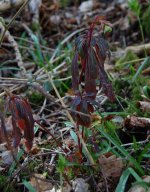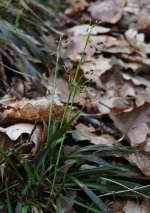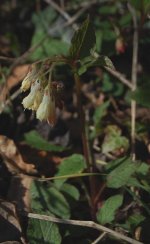Ghostly Vision
Well-known member
Hi all
Despite my best efforts at checking and cross-checking the field guides, I cannot put a name to the attached three plants.
One appears to be a Euphorbia and was common in several of the woods I visited yesterday (4th April). The red colour has me baffled. It was quite a large plant, about 30-40cm high.
The sedge/grass was small, about 3-5cm high with distinctive black seeds/flowers
The other has me baffled completely - I can't really put it in a family. It was also small, about 5cm high
Sorry if these are really dudey, common things - as I say, I have checked the field guides before posting but am still stuck.
Thanks in advance
Sean
Despite my best efforts at checking and cross-checking the field guides, I cannot put a name to the attached three plants.
One appears to be a Euphorbia and was common in several of the woods I visited yesterday (4th April). The red colour has me baffled. It was quite a large plant, about 30-40cm high.
The sedge/grass was small, about 3-5cm high with distinctive black seeds/flowers
The other has me baffled completely - I can't really put it in a family. It was also small, about 5cm high
Sorry if these are really dudey, common things - as I say, I have checked the field guides before posting but am still stuck.
Thanks in advance
Sean
Attachments
Last edited:







